The monarch butterfly: Latin (scientific) name is Danaus plexippus – (duh-NAY-us PLEX-ip-us)
The metamorphosis of a monarch takes place as it transforms from the stages of an egg, to a larva, to a pupa, to a butterfly.
Larva – (LAR-vuh), plural, larvae (LAR-vee)
the second stage, after the egg, in metamorphosis. Also known as “caterpillar.”
Molting – the shedding of skin. A monarch larva molts as it grows and becomes too large for its former skin.
Monarchs molt five times in their larval state, which lasts about 9-14 days
Instar – a period between larval molts. There are five of these periods in the growth of a Monarch larva, and the caterpillars are identified by the stage. Time in each stage is temperature dependent.
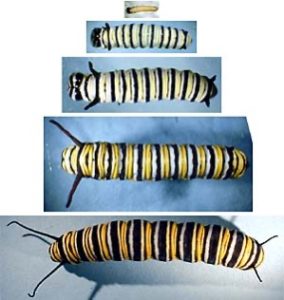
1st instar— pale, no stripes, black head. 2-6 mm in length, 1-3 days
2nd instar — black, yellow, white bands, yellow triangle on head. 6-9 mm. 1-3 days
3rd instar — black and yellow bands are darker, more distinct. Feeds using cutting motion on leaf edges. 10-14 mm. 1-3 days.
4th instar — banding pattern on the body is more distinct, white spots on the prolegs (the fleshy stubs near the abdomen, which provide stability). Front tentacles: 5 mm. 13-25 mm. 1-3 days
5th instar — vivid stripes, black widens. Plump.Move fast and far as they seek a pupating site. Front tentacles: 11mm. 25-45 mm, 3-5 days
Frass – the waste product of the larvae, called caterpillar poop by most students. Monarch larvae produce a lot of this, especially in their later instars.
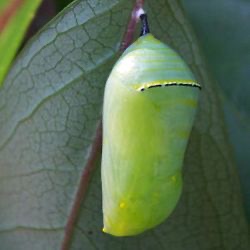
Chrysalis – (KRISS-uh-lis); plural, chrysalides (KRISS-uh-lids)
another name for a butterfly pupa. A “cocoon”is a silk web that encloses the pupae of many moths, but not butterflies.
Pupa– (PU-puh) plural, pupae (PU-pee)
the third stage in metamorphosis, after the larval stage. In Monarchs this stage lasts 8-13 days.
Pupate – to change from a larva (caterpillar) to a pupa (chrysalis)
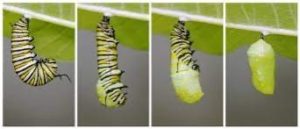
Cremaster – a small stick-like appendage that secures the chrysalis to the silk appendage that was spun at the beginning of the pupation.
Eclosion – an entomological term; the emergence of an adult insect from its pupal case -or- the hatching of a larva from its egg. The monarch swings down and out of the chrysalis, with a swollen abdomen full of hemolymph (fluid). Contractions pump the fluid into the veins of the wings, expanding them. The proboscis — the coiled feeding tube for sucking nectar— is knit together from its two separate pieces. The butterfly will also excrete meconium, a reddish liquid of waste produced by the monarch while it was in a chrysalis. It will hang on the empty chrysalis until the wings are dry and strong (usually at least four hours), and then it is ready to fly.
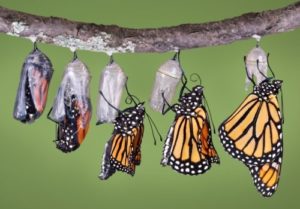
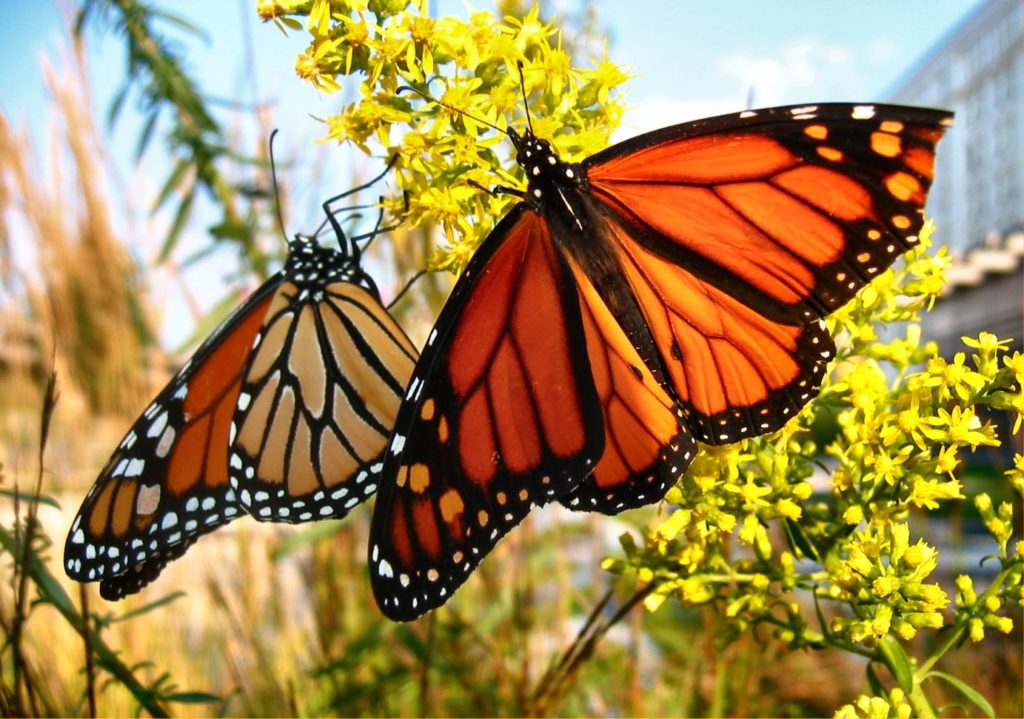
Is Kansas in the current migration path of Monarch? I have noticed milkweed in our rolling Flint Hills, a county just east of me.